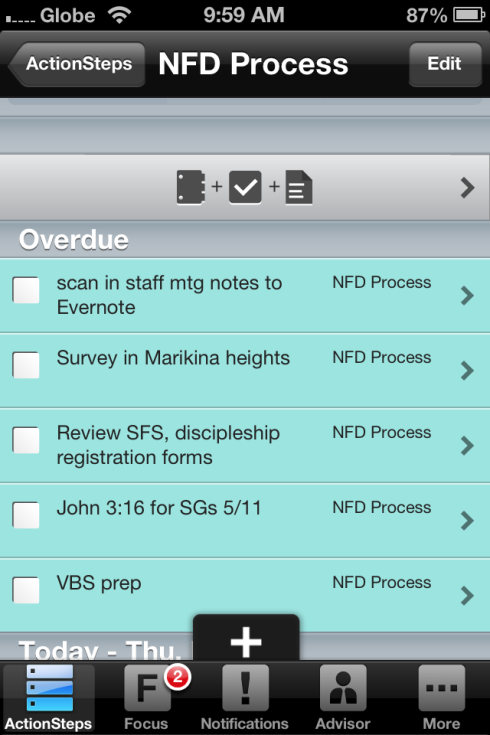by Marc Buxton | | Leadership, Time Management
There are two things that can happen during a face to face meeting: creating content or sharing information. In terms of the workplace, face to face meetings should happen only when real time collaboration and discussion are necessary. They should not occur to simply share information. And yet, I imagine most of the meetings you attend fall into the informative category.

source:http://www.sxc.hu/photo/1428640/
by Marc Buxton | | Leadership
We hear a lot about momentum in ministry. But do we really understand what we’re hearing? To really harness the power of something, you must understand it. To harness the power of wind for sailing, you must understand principles about how a sail works. In the same way, in order to harness the power of momentum, we must first understand what it is.

I have experienced momentum in my ministry, only to let it slip away and vanish. I didn’t harness it because I didn’t understand it. Yet even though I didn’t understand it, I could “feel” it. I know you know the “feeling” of momentum too; it’s tangible.
When a sports team begins to score points and make up the deficit – they have momentum. And everyone – players, coaches, and fans – can feel it. When your ministry team experiences a big win, there is a sense of momentum. You can “feel” it. But what are we really feeling? What is momentum?
(more…)
by Marc Buxton | | Leadership
In most areas of occupation, there are thinkers and doers. Neither is more necessary than the other, and yet each depends on the other. The thinker must have the doer to implement his ideas; the doer requires the thinker’s thoughts to give him a task or direction.
The football coach dreams up incredible offensive schemes, yet he requires the players to run them. The offensive players are ready to engage the defense and move the ball – but they need a good game plan to work together effectively. Each is reliant on the other to accomplish their goals, and neither is more or less important than the other.
So it is with ministry.
I have observed this facet of the ministry world: there are thinkers and there are doers.
There are those who make clear the guidelines, provoke thought, and spur ideas. And there are those who implement them to great spiritual gains. Men like Augustine, Thomas Aquinas, C. S. Lewis, and Francis Schaeffer were all thought leaders of their time – the ones who thought valiant thoughts concerning the things of God. But with their noses in books and journals and their minds wading in theological depths, they had less time for action on these subjects than they might have hoped.
But the doers caught their ideas, and ran with them.
In my opinion, we need both types of leaders in our churches today – and Christianity as a whole – thought leaders and action leaders. We must have those who continually drive us closer to God through sound theology and biblical methods. We must also have action leaders who transform these doctrines into application – with boldness and vision leading and inspiring us to live them out daily.
This division in roles does not excuse a person from both thinking and doing together. Both should be done by all believers. But certainly, God has made some to spend more time on one facet than another. And together, it is a beautiful partnership.
As an introvert, I find myself drawn towards times of pensiveness, quiet reflection, and theological reasoning. This is not to say I don’t take action (I do), but that I do take much pleasure in thinking thoughts that drive methodology.
We should be thankful for the introverts and extroverts in the church world. Both are necessary for biblical success.
by Marc Buxton | | Leadership
I am currently studying a foreign language that is very foreign to me. As some of you are aware, I live and work in the Philippines as a missionary. One of the languages spoken here is Tagalog (Filipino), and I am studying the language now. Tagalog is heavily based on Spanish – of which I know nothing about. I took 3 years of French in High School and 1 in college. No Spanish. At all.
So, learning Tagalog is proving to be a very difficult thing. But I’ve realized something in the process. To really learn the language, you have to be willing to try to speak it in public situations. And that means being willing to make mistakes. It means being willing to be laughed at (and laugh at yourself). It means being willing to be dumb; admit that you don’t know.
The same applies to our leadership. In order to grow, we must be humble and admit that we don’t know. We must look to others for guidance. We can’t take ourselves too seriously. And we have to admit, to ourselves and others, that in certain areas – we’re dumb.
Once we arrive at that level of clarity, we can being to move forward.
And if you are surrounded with great people, your humbleness will give them a chance to help you – and lead in their own right.
To become a great leader, first be willing to be dumb, and then you can be excellent.
by Marc Buxton | | Leadership, Technology, Time Management

As a missionary and a pastor, I juggle many different responsibilities. My tasks can change from day to day, especially when there is a special event or service planned. But normally, 9 out of 10 times, these tasks fall into a certain category of ministry.
Keeping all of these categories straight in my head proved to be impossible. Knowing what to prioritize or how much work was left on a specific project was as hard, or harder, than the work itself.
Thankfully I found a solution.
For the last year I have been using Action Method by Behance to keep my ministry life organized and in sync.
A big stress in ministry is realizing (or being told) that you need to finish a certain task, but having no good way to record that “to do” for later. So you end up emailing yourself, making a note on your phone, or (cringe) writing a reminder on a scrap of paper. No more. Enter Action Method.
With Action Method you can:
- Record tasks that you must finish later
- Track progress on a specific task or event
- Plan your “To Do” list for the day
- See a snapshot of work to do, by project or by date
Here’s an example of how I use it:
I’m in a meeting for our church plant, and the discussion ends with the realization that I need to produce a new document for internal staff use. I don’t have time to produce it now, but it needs to be completed and emailed to the staff by next Wednesday . I create an action item in Action Method: “create and email new meeting format guide to staff”. I categorize it as “church plant admin”. Then, next Wednesday morning when I am creating my to do list for the day, I open Action Method and see this task. It’s also color coded, so I immediately know at a glance it’s a church plant item that deserves my full attention. When I’ve completed it, I click the check button and it disappears. Ah, satisfaction.

I use Action Method to tell me what I need to do and when I need to do it. It is my guide for accomplishing my goals – both daily and long range. Without it, I would be less effective, unorganized, and frankly a little frazzled.
What do you use to stay organized? Comment and describe your “to do” process below.
by Marc Buxton | | Leadership

To say “no” the leadership way, you must have your priorities clear. Then, you have the authority with yourself to say “no” to others.






